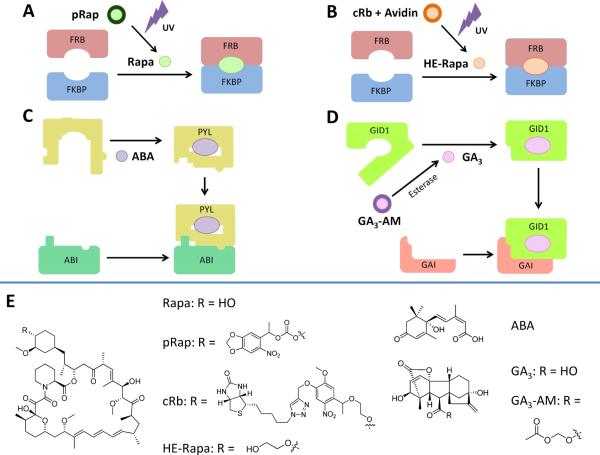Fig. 2.
Variations on the CID theme: caged rapamycin and plant hormone CID systems. a Direct UV photocaging: the caged rapamycin derivative pRap is unable to induce FKBP-FRB dimerization. Activation by UV light releases rapamycin, which can then induce dimerization as normal. b Indirect UV photocaging: the cRb-A complex is unable to cross the cell membrane, and thus unable to interact with intracellular FRB or FKBP proteins. Activation by UV light releases HE-Rapa, which is able to cross the plasma membrane and induce FRB-FKBP dimerization. c Plant hormone CID: the plant hormone abscisic acid (ABA) is able to induce complex formation between the ABI and PYL protein moieties, in a manner analogous to rapamycin-induced dimerization of FRB and FKBP. d Plant hormone CID: The gibberellic acid derivative GA3-AM, upon crossing the plasma membrane, is rapidly cleaved by cytosolic esterases to release GA3, which can induce complex formation between GID1 and GAI proteins

